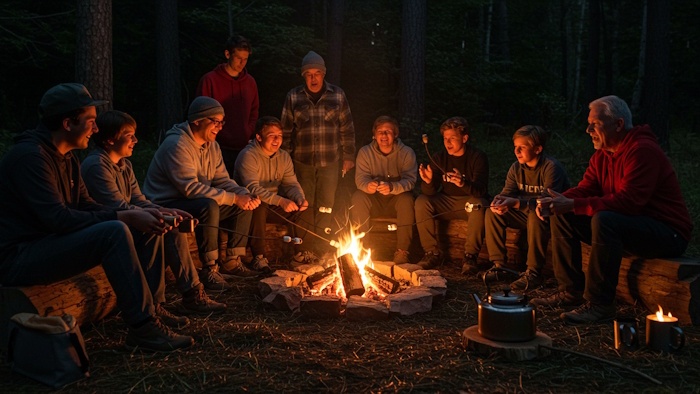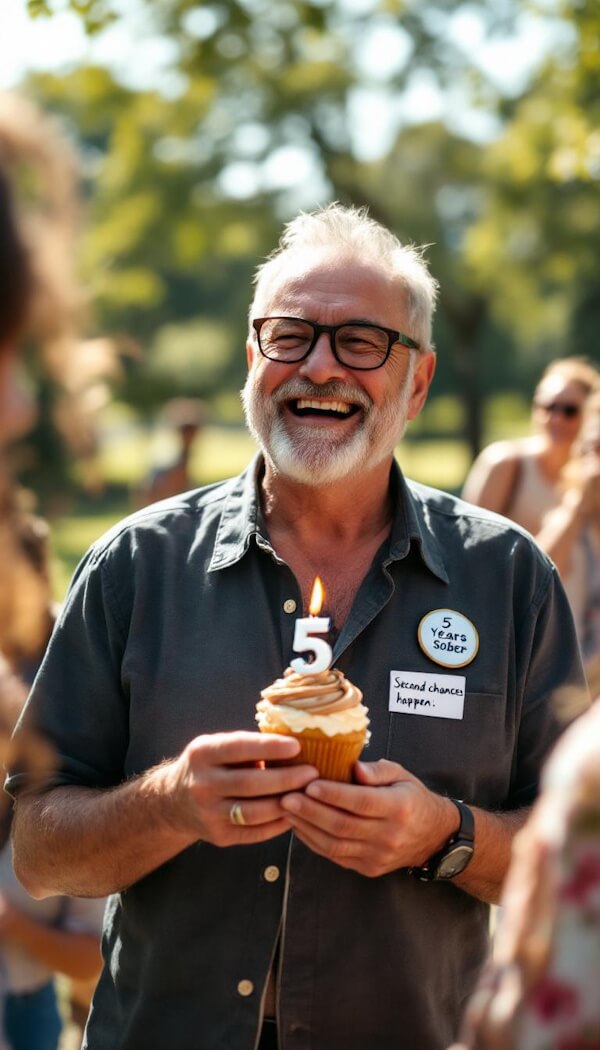Storytelling psychology gets into the heart of what makes us click, swipe, and share online.
When a story grabs us, it’s not just the words that pull us in; it’s the science. Our brains light up for emotionally charged content, whether it’s a funny video or a personal journey.
The real magic happens when you strike an emotional chord with your audience. That’s why posts built on storytelling psychology can turn a casual reader into an engaged fan.
If you tap into those emotional triggers, your content stands out in the scroll. Want to dive deeper into what causes those gut reactions?
The key is simple: connect first, then educate or entertain. There’s a reason posts that feel human, messy, raw, or bold get more clicks.
Let’s see how these principles can help us garner more attention and engagement with every word.
What is Storytelling Psychology and Why Does It Work?
Storytelling psychology is the study of why stories capture our attention and stick in our minds. The secret?
Stories aren’t just entertainment. They hack into the way our brains are wired, making us listen, remember, and act.
When you apply storytelling psychology, you make your content more engaging, memorable, and less likely to be scrolled past.
Understanding the Neuroscience of Storytelling
When you hear a good story, your brain lights up in ways plain facts never quite manage. Science shows that stories can trigger a chain reaction inside your head:
- Dopamine floods in when the story excites or surprises, helping you remember the details.
- Oxytocin begins to flow during emotional or empathetic moments, fostering trust and connection with the storyteller.
- Narrative transportation is the feeling of being whisked away into the story. Your brain treats the experiences in the tale almost as if they’re real, making lessons and messages stick.
If you want to geek out on this brain magic, check out the research from the University of Toronto, which found that hearing stories changes brain chemistry, boosting oxytocin, empathy, and our sense of connection (The Brain Science of Storytelling: Finding the Connection).
The Evolutionary Roots of Storytelling
Humans are natural storytellers. For thousands of years, people sat around the campfire, swapping tales to teach, entertain, and pass on wisdom.

Our ancestors survived by sharing key information through stories. This is why:
- We’re drawn to stories like bees to honey.
- Our brains are designed to recognise patterns, follow narratives, and recall characters.
- Social bonds grew stronger as we shared our successes, worries, and dreams through stories.
Storytelling isn’t a new trick. It’s an old survival tool that now helps us share everything from memes to major life lessons in the scroll of a post.
Key Psychological Principles in Effective Stories
Great stories don’t just inform—they connect on a gut level. Here’s why the best stories are sticky:
- Relatability: When people see something of themselves in a story, they care. If your story mirrors their hopes or struggles, they’ll lean in.
- Empathy: Sharing emotions triggers the release of oxytocin. When readers feel what your characters or you are feeling, they’re hooked.
- Identification: We all want a hero. If you give your audience a character to root for, fight against, or identify with, you build deep engagement.
Emotion plays a starring role. Most viral posts tap into triggers like joy, surprise, anger, or hope.
Even music can influence how we absorb stories. If you’ve ever noticed how a movie’s soundtrack can change your mood, you’re experiencing the psychological effects of music in storytelling.
Storytelling psychology works because it sticks to our brains, tugs at our emotions, and makes us feel part of the ride. That’s what keeps people reading, sharing, and coming back for more.
Essential Components of a Click-Worthy Story
Every story that pulls you in and refuses to let go is built from a handful of tried-and-true ingredients.
Getting your content noticed in busy feeds takes more than just a good idea. It’s about grabbing attention from the start, tugging at emotions, and structuring the journey so readers have to know what happens next.
What are the core parts of storytelling psychology that transform a post from “meh” to “must-click?”
Crafting Irresistible Headlines that Spark Curiosity
If your headline falls flat, your story never gets a shot. The headline isn’t just a label — it’s the first taste of your story’s promise.
Think of it like a movie trailer in six to ten words. People are bombarded with options, so a headline must demand attention and create a little tension in the mind. Haven’t you clicked something just because the title left you wanting more?
Numbers don’t lie. A study by Copyblogger found that 80% of people will read your headline, but only 20% read the rest.
Another case study by BuzzSumo analyzed one million headlines, revealing that headlines with emotional triggers and unexpected phrases can double or triple click-through rates.
What do the best click-worthy headlines do?
- Trigger curiosity without misleading (avoid those clickbait regrets!).
- Use power words like “secret,” “proven,” “unexpected,” or “revealed.”
- Frame posts as solutions to problems (How to Beat Procrastination Back Into Hiding”).
- Promise value in a unique, personal, or even slightly quirky way.
If you want a toolkit of time-tested headline techniques, check out 15 Storytelling Techniques and How to Use Them for proven ideas that drive more clicks.
Storytelling Psychology Includes Building Emotional Connections with Your Audience
Eliciting emotions in readers is where real storytelling psychology truly shines. Your narrative voice—how you “sound” in writing—should make readers feel seen and understood.
Don’t be afraid to sound conversational or drop a personal detail. People click and share when content feels genuine, not canned.
Authenticity is your superpower. Speak in plain language, share genuine struggles, and use word choices that reflect how your audience typically communicates.
The best posts use emotion carefully: they might use humor, show vulnerability, or express bold opinions. These tricks help stories stick in memory and inspire action.
Here’s why emotional connection works:
- It lights up the same brain areas as personal experience.
- It builds trust and long-term loyalty.
- Readers are more likely to comment, share, and act.
For strategies that make stories more engaging and relatable, explore psychological strategy for influence and behind-the-scenes tactics for creating deeper bonds.
Want to ramp up your ability to connect? Boost your emotional intelligence skills, which not only improve your storytelling but also help build genuine trust.
Structuring Stories for Maximum Engagement
Even with bold headlines and emotional appeal, a clumsy structure can lose readers. Think of every story as a rollercoaster: you need a clear beginning, build-up, a thrilling twist, and a satisfying end. That’s the basic story arc.
Here’s what engaging stories have in common:
- Hook: Capture attention with a powerful statement or vivid scene.
- Rising Action: Introduce stakes, build suspense, or raise questions.
- Conflict: Give the reader something to root for or against. Conflict is essential—it creates the tension that keeps people engaged.
- Climax: This is where problems reach their peak or answers (finally!) are revealed.
- Resolution: Tidy up loose ends or leave the reader with a powerful takeaway.
Pacing keeps readers moving, avoid long, winding sentences and keep paragraphs short. Use bullet points, lists, and white space to make scrolling a pleasant experience, not a tedious one.
For hands-on ideas to keep your stories in high gear, review 11 Strategies to Tell a Good Story.
And if you love fast-paced, snackable formats, don’t ignore the benefits of short-form videos—they pack all these storytelling psychology tricks into a minute or less!
With these essential pieces, your stories won’t just land clicks—they’ll turn casual readers into true fans.
Applying Storytelling Psychology: Proven Techniques for Viral Posts
Storytelling psychology packs a punch when you combine strong narratives with clever psychological techniques.
Viral posts don’t happen by accident. They work because they tap into the way our brains process images, emotions, and sensory cues.
Two easy ways to boost the viral potential of your stories are through the use of powerful visuals and the strategic application of emotional triggers and music.
Incorporating Visual Storytelling for Greater Impact
Humans process visuals 60,000 times faster than text. A single image or video can stir curiosity, empathy, or excitement within seconds.
That’s why the best-performing social posts almost always pair a gripping story with attention-grabbing visuals.
When you add images, videos, or graphics to your story, you activate several psychological mechanisms all at once:
- Instant recognition: Visuals help users “get” the story before they’ve read a word.
- Memory recall: People remember vivid pictures long after the words blur.
- Emotional cues: The right image can prompt immediate emotional responses—think of puppy eyes or a dramatic before-and-after.
For example, a personal post describing a challenging journey becomes far more powerful when you include a real, expressive photo. Suddenly, your audience isn’t just reading, they’re feeling your story.
Leveraging Emotional Triggers and Music
Emotion is the secret sauce of storytelling psychology. If you want shares, comments, and a genuine connection, your story needs emotional punch. But there’s another overlooked amplifier—music.
Here’s how to use both for maximum effect:
- Pair posts with music or sound: Even a short background track can quickly set the mood—think upbeat tempos for victory stories, or softer melodies for reflective moments.
- Anchor emotions: Use descriptive language to tap into feelings like nostalgia, hope, or excitement. Couple that with emotionally appropriate music in videos, and you double the impact.
- Harness peaks and valleys: Build suspense, then resolve it with powerful visuals and sound cues. Stories that rise and fall emotionally tend to get more shares because they take the audience on an emotional ride.
Research shows music can help people feel more connected and emotionally open. It’s not just background noise—music can transform how your audience interacts with your message.
Learn more about the psychological benefits of music, and discover how it can help you boost those clicks and shares.
Blend authentic visuals, emotional triggers, and the right soundtrack, and you’ll build stories primed to travel far across timelines and feeds.
Storytelling Psychology for Different Content Formats
Storytelling psychology isn’t one-size-fits-all. The way you tell a gripping story in a video isn’t the exact recipe you’d use on Instagram, Facebook, or even in a classic blog post.
Each format requires different tactics to capture attention, evoke emotion, and inspire shares.
The magic comes from understanding how your story should flex depending on where your audience is and how they like to consume content.
Optimizing Storytelling for Video Content
Video storytelling packs a sensory punch. Sound, color, facial expressions, and movement all work together to trigger emotions and boost retention.
In a video, showing is always better than just telling. Our brains love rich, layered stories where visuals and audio hit us at the same time.
Here’s how to boost audience engagement and emotional payoff in video:
- Open with an emotional hook: Start with a relatable problem, a surprising fact, or a look that says it all.
- Pace matters: Use editing techniques, such as quick cuts or slow motion, to match the mood and draw the audience through the narrative.
- Lean into authenticity: Real faces and unscripted moments make your video stories far more relatable and trustworthy.
- Use music and sound: The right background track or sound cue can instantly dial up suspense or evoke joy. It’s science—music taps into our emotional wiring.
- End with a call to feeling: Don’t just push a product or message; invite the audience to feel something, whether it’s hope, relief, or excitement.
If you want a full rundown of what makes people watch till the very end, check out Key Elements of an Effective Video.
Tailoring Stories for Social Media Virality
Stories on social media must fit into tight spaces and short attention spans. Brevity is your best friend.
You need to snag eyeballs with a strong hook, stir a feeling, and make sharing irresistible—all in a matter of seconds.
What powers viral stories on Instagram, Facebook, or X?
- Start with punchy hooks: Think of a bold quote, spicy opinion, or a visual that forces a double-take.
- Aim for bite-sized stories: Condense your story to a single image, twenty words, or a short video clip. Short and sweet wins the feed.
- Make it share-worthy: Tap into emotions people love spreading—joy, surprise, outrage, or hope trigger more shares.
- Use interactive elements: Polls, stickers, and questions create “micro-stories” your audience helps finish.
- Tap cultural cues: Memes or trends can double exposure. Adapt your message to what’s hot now for bonus clicks.
Social media stories are most effective when people feel compelled to comment or share them.
Our brains get a quick dopamine hit when we share something that makes us look smart, funny, or up-to-date.
Sample story snippets for each platform:
- Instagram: “She missed her train again, but this time it led to coffee with a stranger and a new job. Would you take the risk?”

- Facebook: “Five years sober today. Never thought I’d laugh this hard again—reminder that second chances do happen.”

- X (Twitter): “Boss said ‘nobody cares about your weekend.’ 14 coworkers just proved him wrong with the weirdest stories I’ve ever heard.”

With the right tweaks, you can transform any story into a format that suits the platform and psychology behind what makes your audience click, react, and share it.
Final Thoughts About Storytelling Psychology
Understanding storytelling psychology isn’t just for writers; anyone sharing ideas online needs it. The key takeaway here is that stories tap into hardwired emotions that prompt people to pause, react, and remember.
When you anchor your posts with clear headlines, real emotion, tight structure, fresh visuals, and even the right soundtrack, you’re stacking the odds for genuine clicks and shares.
Don’t just toss facts to your audience. Pair the science of human behavior with a bit of humor and honesty.
This builds trust and keeps your reader engaged, just as using psychological triggers to establish trust helps connect on a deeper, emotional level.
Want your stories to travel even farther? Try using video or animated formats to maximise the impact of visual storytelling and music.
For more on how sound can supercharge your narrative, dive into the role of music in videos.
Ready to create digital content that gets real engagement? Apply these principles in practice and see what resonates with your audience.
Thanks for reading—now, take a shot at sharing your own story in the comments or pass this along to someone who needs a little content inspiration.

As a Visual Digital Marketing Specialist for New Horizons 123, Julie works to grow small businesses, increasing their online visibility by leveraging the latest in internet and video technologies. She specializes in creative camera-less animated video production, custom images, content writing, and SlideShare presentations. Julie also manages content, blog management, email marketing, marketing automation, and social media for her clients.




0 Comments